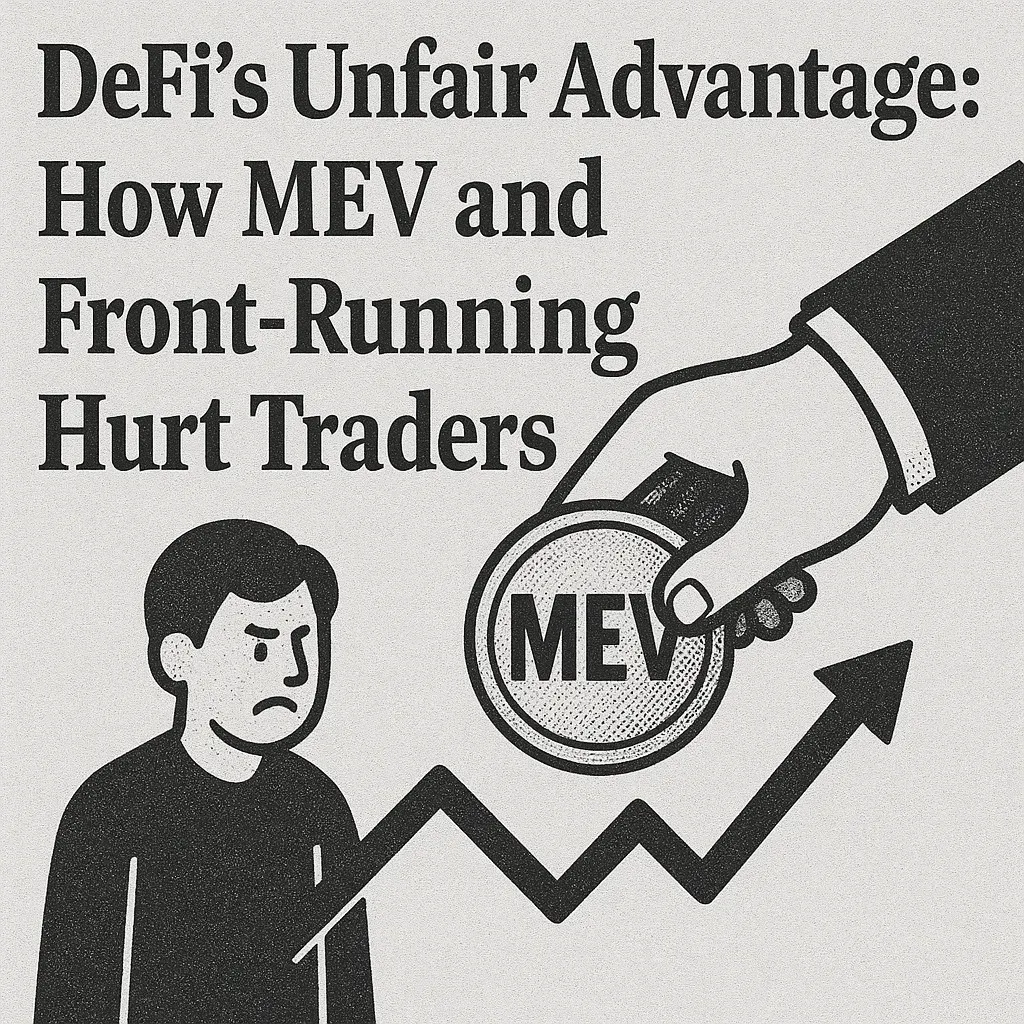
How MEV and Front-Running Hurt DeFi Traders
While decentralised finance (DeFi) has revolutionised access to trading, lending, and yield opportunities, it also comes with a lesser-known shadow: MEV (Miner/Maximal Extractable Value) and front-running. These subtle but powerful forces can significantly skew trading outcomes, often to the detriment of everyday users.
Whether you trade on Ethereum, Solana, or Base, it's likely that MEV has affected you without your knowledge.
What is MEV and Why Does It Matter?
Maximal Extractable Value (MEV) refers to the profit blockchain validators (like Ethereum stakers or miners) can earn by reordering, inserting, or censoring transactions within a block. In traditional finance, such behaviour would be considered sider front-running, a practice that is illegal in most markets. But in DeFi, it's not just legal; it’s baked into the architecture.
This practice allows sophisticated actors, often armed with bots, to see your transaction coming and strategically execute their trades just before yours, leaving you with worse prices, higher slippage, or even failed transactions.
The Front-Running Problem
Front-running in DeFi isn’t hypothetical. Research from BlockNative and Flashbots reveals an annual extraction of hundreds of millions of dollars in MEV, primarily at the expense of retail users.
Let’s say you place a $10,000 buy order for a token on Uniswap. A bot monitoring the mempool (the queue of pending transactions) sees your trade, executes a slightly earlier buy, then sells right after yours pushes the price up. You end up paying more; they profit from the difference.
“Traders need to monitor transaction timing,” said Ethan Wells, an analyst at DeFi Analytics Group. “If you’re consistently seeing worse-than-expected execution, you’re likely being front-run.”
How It’s Getting Worse in 2025
With the rise of layer 2 networks and more complex smart contracts, MEV strategies are becoming even more aggressive, now including sandwich attacks, liquidation sniping, and oracle manipulation. These tactics not only hurt traders but also undermine DeFi’s promise of fairness and transparency.
Several DeFi platforms, including Curve and Balancer, have acknowledged the issue and are experimenting with batch auctions and private transaction pools to reduce front-running exposure.
What Traders Can Do
Although traders can't completely avoid MEV (yet), they can take the following actions to lessen its effects:
- Use platforms that support Flashbots Protect or private mempool relays.
- Randomise the transaction timing to avoid predictability.
- Consider trading during periods of lower network congestion.
- Use aggregators like 1inch that offer MEV protection features.
DeFi has created unprecedented access to financial markets but also new challenges. MEV and front-running are eroding trust among retail users and enriching those who can exploit the system’s weaknesses.
Until infrastructure evolves, staying informed is the best defence.
Stay on top of any cryptocurrency news by following us on X @ouinex